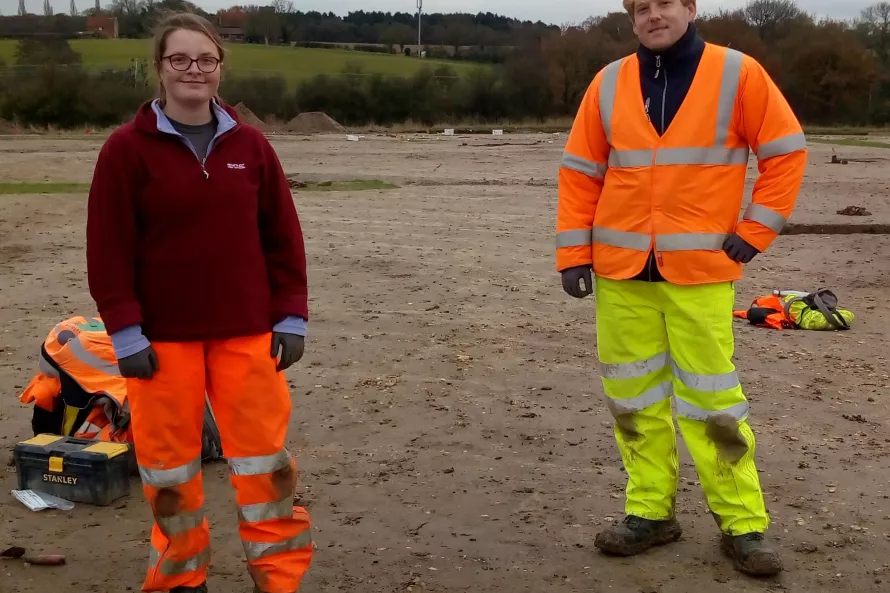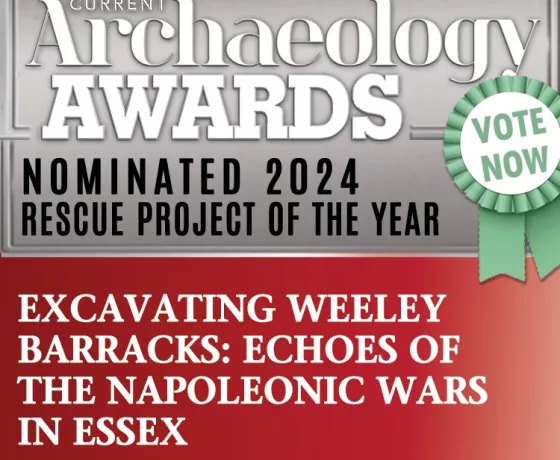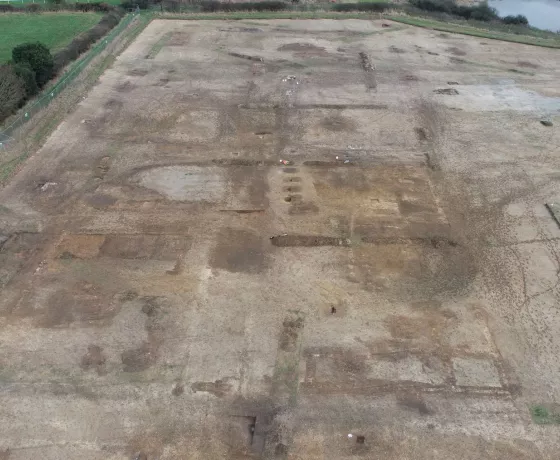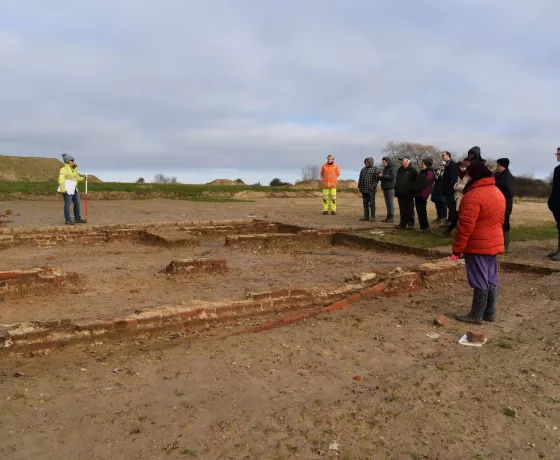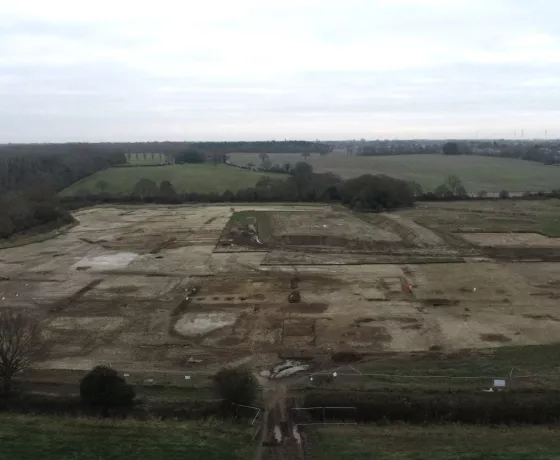To give you a feel of what it's really like to be an archaeologist, we asked two of our team members, Chris and Holly, to do a take over of the blog and write a piece each about what they get up to on site. Today is the turn of Holly to give us an insight into her daily life.
Come back tomorrow to read what Chris gets up to each day at work!
"As always, our day begins with a, probably vain, but collective effort of hoping and praying for good weather for the week to come from the comfort and safety of the trusty OA transit van. In these moments, we weave our way from Harwich to the Weeley site, winding down narrow country lanes as we go.
Once at site, we don ourselves in our dazzling, orange PPE, sticking out like a group of sore thumbs against the earthy browns and lush greens of our surroundings. Then, after collecting an array of tools (usually comprising of a mattock, shovel, hoe and wheelbarrow), we trundle off down to site, often admiring the abundant wildlife on our way. Indeed, it is not uncommon to see the likes of herons, starlings, robins, cormorants, kestrels, kites and buzzards as we work our way along the trampled footpath, our boots caked in mud in mere minutes. My favourite wild visitors are usually the birds of prey - however last week we were graced with the presence of one of the neighbourhood cats; a strikingly black and slinky-looking fellow who carefully stalked his way through the thick, long grasses that border the edges of the excavation site. As a self-confessed cat lover, I am unashamed to admit that his fleeting appearance really made my day.
When we reach the excavation site, we resume whatever business we had started either the day or week before. Last week, I was excavating and recording two building construction cuts. These relatively shallow linear features are likely to represent the past locations of two walls running from north to south, probably associated with the Napoleonic barracks. As the barracks fell out of use however, the bricks from these walls appear to have been taken and used elsewhere (probably in Weeley village). As you can imagine, this would have left a hole in the ground where the walls would have once stood. Those who took the bricks probably would have, rather haphazardly, backfilled these holes, throwing in any old bricks, tiles and mortar left lying around the site. These are the features that I was met with. Both were relatively straight forward to dig and photograph, and the only real challenge I faced were the strong blustery winds throwing my paperwork into a state of disarray whilst I battled trying to draw the features as neatly as I could.
By far the most enjoyable moment I encountered whilst investigating these features however is when I discovered two lovely little pottery sherds lying at funny angles towards the base of the feature. It was only when I lifted and dusted them off that I realised: A) the sherds themselves were quite fine, and B) they appeared to bear some sort of decoration. Noticing this, I hurriedly reached for my brush before delicately cleaning the sherds further. Slowly, I uncovered the pottery’s decorative motif...a 19th century Neoclassical design displaying a human figure enshrouded in either a robe or possibly some leafy foliage. The sense of pride and satisfaction that courses through my being when I find something so interesting is almost indescribable. This is what makes it all worthwhile, all those miserable cold, rainy and windy days spent sliding around getting coated in muck are worth it when you find something like this and experience moments like these. And this is why I love being an archaeologist (that and because it never fails to impress those who don’t already know my profession!).
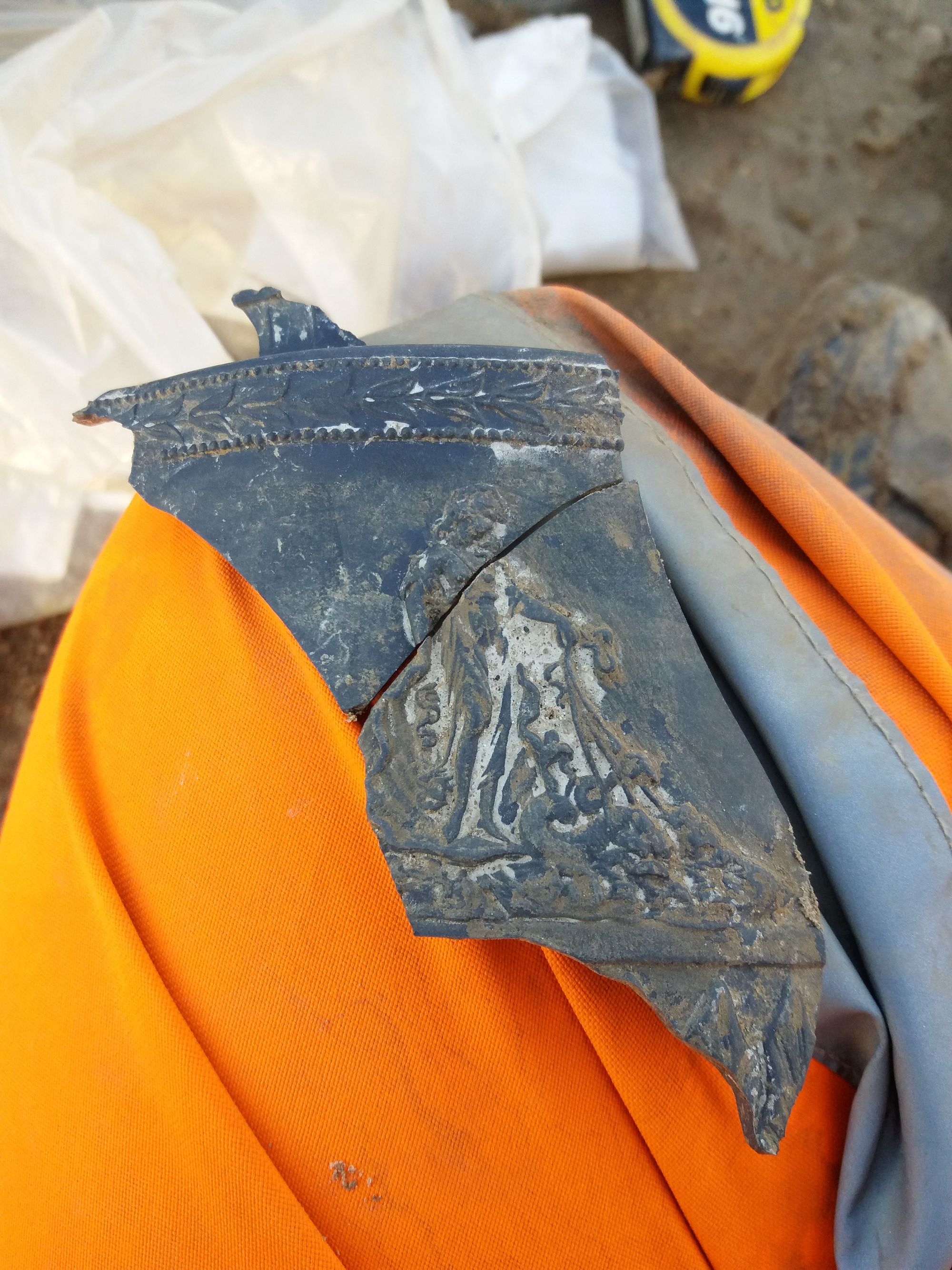
Finally, once the activities of the day have been completed, the spoil cleared and tools tidied, we chase the sun as we make our way back to the compound. We rid ourselves of our ‘orange-ness’ and heave our achy bones back into the van before heading home, readying ourselves for the further discoveries that await us on site."
Other posts in this collection
Read our latest posts about the archaeological investigations at Weeley.

